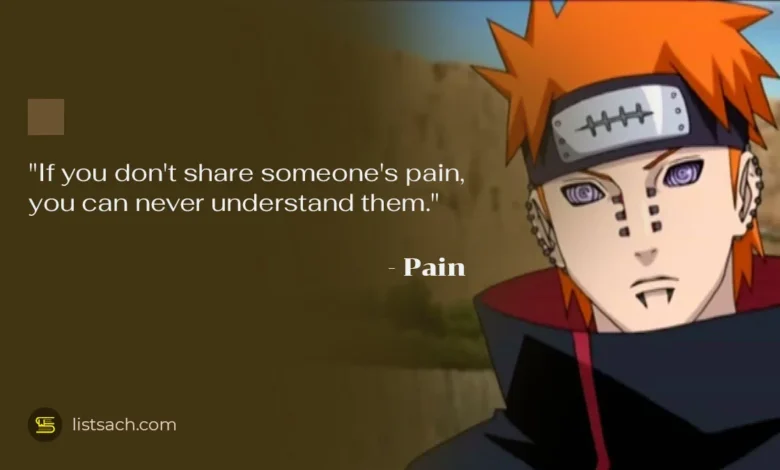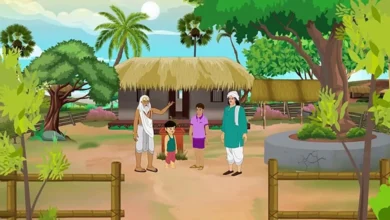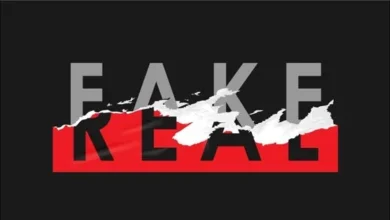Naruto Quotes About Pain: Wisdom, Conflict & Growth

Pain is one of the most central themes in Naruto — both in the storyline and in character development. Whether as tragedy, motivation, or philosophical lesson, the many Naruto quotes about pain resonate deeply with fans. In this article, we explore powerful quotes, their meanings, the characters behind them, and how pain shapes the narrative.
1. The Philosophy of Pain in Naruto
In Naruto, pain is not simply physical suffering; it is a fundamental force that shapes motivations, beliefs, and worldviews. Many characters undergo trials, trauma, or loss—and their responses to pain reveal their true nature.
One of the most quoted lines is:
“Those who do not understand true pain can never understand true peace.”
— Pain/Nagato
This notion — that only through suffering can one grasp peace — echoes repeatedly throughout the series. Naruto, Nagato (Pain), and others confront cycles of violence, sacrifice, and empathy that are inseparable from the concept of pain.
Another recurring idea is that pain can teach, guide, or transform:
“Sometimes you must hurt in order to know, fall in order to grow, lose in order to gain because life’s greatest lessons are learned through pain.”
— Pain
The Naruto lore suggests that pain is a teacher — harsh but effective — and that growth often comes on the heels of suffering.
2. Pain’s Voice: Nagato / “Pain” & His Ideals
Nagato, adopting the alias Pain, is the character most associated with philosophical quotes about suffering. His perspective is austere, and his words often cut to the heart of conflict, loss, and redemption.
Some notable Naruto quotes about pain from his speeches:
-
“I want you to feel pain, to think about pain, to accept pain, to know pain.”
This invitation—or demand—reveals how Pain wants others to share his experience of anguish in order to understand his worldview. -
“When I had nothing and no one, I always had pain.”
A statement of origin and identity, showing how pain has long been a companion for Nagato, even before he became the figure known as Pain. -
“We are just ordinary people driven to revenge in the name of justice. But if revenge is called justice, then that justice breeds yet more revenge and becomes a chain of hatred.”
This line captures the cycle of conflict—how pain leads to desire for vengeance, which leads to more pain. -
“Love is the reason why there is pain. When we lose someone precious to us, hate is born. Vengeance is the product of that hate … this will give rise to more pains.”
Here, he ties love, loss, hate, and pain into one destructive spiral.
Pain’s quotes are not merely villainous monologues—they are reflections of his life, philosophies, and tragedies.
3. Other Characters & Pain: Naruto, Jiraiya, & More
While Pain is the primary voice of suffering philosophically, other characters also deliver memorable quotes about pain, each reflecting their journey and worldview.
Naruto Uzumaki
Naruto’s experiences—loneliness, rejection, loss—shape his understanding of pain. One of his poignant lines:
“The pain of being alone is completely out of this world, isn’t it? … It actually hurts.”
— Naruto
This quote captures the emotional dimension of pain: it’s not only about failure or battles but about human connection, belonging, and internal anguish.
Jiraiya
The wise mentor Jiraiya reflects on how suffering can make one compassionate:
“When people get hurt, they learn to hate… When people hurt others, they become hated and racked with guilt. But knowing that pain allows people to be kind. Pain allows people to grow… and how you grow is up to you.”
— Jiraiya
This is a gentler philosophy than Pain’s: suffering doesn’t necessarily justify destruction—it can lead to empathy and kindness if one chooses that path.
Other Voices
Other Naruto characters occasionally mention pain in passing—whether about emotional wounds, betrayal, or sacrifice—but the deepest and most repeated Naruto quotes about pain come from Pain and Jiraiya, in contrast to Naruto’s own reflections.
4. Themes & Interpretations in Pain-Related Quotes
What deeper themes are revealed by these quotes? Let’s unpack some.
Cycle of Hatred & Revenge
Many lines emphasize how pain leads to revenge, which breeds more pain—forming an endless loop.
“If revenge is called justice, then that justice breeds yet more revenge.”
— Pain
This philosophy underscores one of Naruto’s core truths: conflict rarely ends with violence.
Empathy Through Suffering
Another theme is that understanding someone else’s pain is vital for genuine connection.
“If you don’t share someone’s pain, you can never understand them.”
Pain urges others to feel as he feels so that they might see the world from his perspective.
Growth Through Adversity
Many quotes present suffering as transformative:
“Life’s greatest lessons are learned through pain.”
This idea resonates throughout Naruto’s arcs: characters often grow after loss, failure, or hardship.
Peace & Suffering
Probably the most famous line:
“Those who do not understand true pain can never understand true peace.”
— Pain
It links peace—not merely absence of conflict—but a deeper state that requires experiencing and reconciling with pain.
5. Impact & Reception: Why These Quotes Resonate
Why do Naruto quotes about pain connect so deeply with fans across the world? Several reasons:
Emotional Authenticity
Many fans have experienced loss, heartbreak, or suffering. When a character voices those experiences, it validates personal grief. Quotes like “The pain of being alone … it actually hurts” echo real emotional struggles.
Philosophical Depth
Unlike simple “pain = bad” narratives, Naruto treats pain as complex: a force for growth, empathy, destruction, or redemption. That depth appeals to older readers and philosophers alike.
Character Arcs & Contrast
Pain’s ruthless ideology contrasts sharply with Naruto’s bright spirit and resilience. Their dialogues about pain and peace provide tension and profound character development. The clash of philosophies enriches the narrative.
Memorability & Reusability
These quotes get shared in social media, art, memes, and motivational posts. They’re concise, powerful, and applicable beyond Naruto’s world—about life, purpose, and resilience.
6. How to Use Naruto Quotes About Pain Constructively
If you’re inspired by these quotes, here’s how to incorporate their wisdom into your life or creative work:
Personal Reflection & Growth
-
Journal: Write down a quote and reflect on what it means to you.
-
Meditation: Sit with the quote, feel its emotional weight, and explore internal reactions.
-
Sharing: Use the quote in art, social posts, or personal messages—contextualizing it to your experience.
Creative Use
-
Fan art or quotes visuals: Combine these lines with imagery of characters or abstract art.
-
Essays, blogs, or analyses: Use quotes as anchors for deeper discussion about suffering, growth, or peace.
-
Motivational content: Pair a quote with personal anecdote or message of resilience.
Caution with Interpretation
-
Context matters: These lines carry meaning within Naruto’s universe. Use them thoughtfully in new settings.
-
Avoid glorifying suffering: Recognize that pain is neither desired nor avoided—it’s part of life, but how we respond matters.
-
Respect copyright & attribution: When using quotes in public content, credit the source or character.
Conclusion
Naruto quotes about pain encapsulate the essence of the series: that suffering and conflict are integral to understanding, growth, and ultimately transformation. From Pain’s austere philosophies to Jiraiya’s compassionate insight to Naruto’s own vulnerability, these quotes traverse the emotional and moral landscape of the shinobi world.
Whether used for personal reflection, creative inspiration, or philosophical discussion, these quotes reveal how pain is woven into the fabric of life—and how acknowledging it can lead to empathy, purpose, and even peace.




